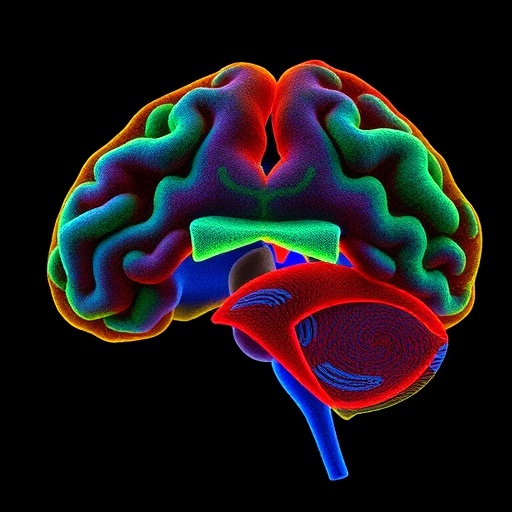In the ongoing battle against respiratory pathogens, a groundbreaking study has illuminated a previously underappreciated aspect of viral behavior: the motility of virions capable of cleaving sialoglycans. Published in the latest issue of npj Viruses, the research by Liu, de Vries, and de Haan unravels intricate dynamics that enable respiratory viruses to navigate their mucus-laden environments with remarkable agility. This discovery fundamentally reshapes our understanding of viral spread within hosts, potentially informing novel antiviral strategies aimed at impeding infection propagation.
Traditionally, virions—the infectious viral particles—were considered passive entities, drifting randomly until encountering a suitable cellular receptor. However, the study in question challenges this passive paradigm by demonstrating that certain respiratory viruses are endowed with enzymatic functionalities that actively modify their extracellular surroundings. Specifically, these viruses possess the capability to cleave sialoglycan residues from host cell surfaces and mucus structures. This enzymatic action generates a localized biochemical landscape conducive to directed virion movement, effectively propelling the virus particles through the complex mucosal environment.
The investigative team employed a combination of state-of-the-art imaging techniques and biochemical assays to elucidate the biophysical mechanisms underpinning this phenomenon. Focusing on respiratory viruses known for their sialidase or neuraminidase activity—such as influenza and certain coronaviruses—the researchers visualized virion trajectories within synthetic mucus analogues designed to closely mimic the glycan composition found in human airways. These visualizations revealed that virions do not merely exhibit stochastic Brownian motion but instead engage in a directed motility pattern, seemingly “surfing” along gradients of sialoglycan cleavage.
.adsslot_VFIZLOh4DG{ width:728px !important; height:90px !important; }
@media (max-width:1199px) { .adsslot_VFIZLOh4DG{ width:468px !important; height:60px !important; } }
@media (max-width:767px) { .adsslot_VFIZLOh4DG{ width:320px !important; height:50px !important; } }
ADVERTISEMENT
At the molecular level, the virion’s surface enzymes cleave terminal sialic acid residues from glycoproteins within the extracellular mucus mesh. This cleavage alters both the charge and the density of the mucosal barrier, reducing local viscosity and adhesion. The consequences are profound: virions can thereby reduce the physical barriers that hinder diffusion, allowing them to traverse more efficiently towards target cell receptors. The study showcases that the cleavage-induced motility confers a clear fitness advantage in terms of infectivity, as virions are more likely to reach permissive cells faster and avoid entrapment in the gel-like mucus.
Beyond mere traversal, this enzymatic motility equips the virus with a dynamic tool to manipulate host defenses. Mucus is a critical frontline barrier in the respiratory tract, designed to trap and clear invading pathogens through mucociliary clearance mechanisms. By actively remodeling this barrier, viruses challenge innate immunity on two fronts: they reduce mucus viscosity to facilitate penetration, and concurrently impede mucociliary transport, which would otherwise sweep virions away. This dual strategy underscores a sophisticated evolutionary adaptation of respiratory viruses that has remained largely unrecognized.
Complementing these mechanical insights, the authors explored the implications for viral transmission between hosts. The findings indicate that virion motility not only optimizes individual infection events but may also influence viral shedding and aerosolization dynamics. Efficient mucus penetration potentially increases viral loads in respiratory secretions, enhancing the probability of successful transmission through droplets and aerosols. This connection between microscopic virion mechanics and macroscopic epidemiological outcomes offers exciting avenues for further research.
The study’s experimental rigor is evident in its multidisciplinary approach, integrating virology, biophysics, and glycoscience. Using genetically engineered viral strains with modified sialidase activity, the team demonstrated that attenuated enzymatic function severely limits virion motility and infectivity. Conversely, strains exhibiting hyperactive sialidase activity displayed enhanced motility but encountered diminishing returns, suggesting a finely tuned balance dictated by evolutionary pressures. Understanding this balance is vital for antiviral drug design, as it highlights potential targets within viral enzymatic machinery.
Furthermore, the research highlights how virion motility could influence viral tissue tropism within the respiratory tract. The mucus composition varies significantly along the airway—from the nasal passages to the alveoli—both in terms of glycan structure and thickness. Virions capable of actively modifying their surroundings may selectively adapt to different niches, influencing the severity and localization of infection. This insight provides a molecular basis for observed clinical variations in respiratory diseases caused by similar viral species.
Intriguingly, the authors also raise the prospect of therapeutically exploiting this motility mechanism. Current neuraminidase inhibitors, widely used in influenza treatment, might not fully account for viral motility’s role in infection dynamics. Advanced inhibitors that more precisely target virion movement, rather than solely enzymatic cleavage, could afford improved clinical outcomes. Additionally, designing mucus-targeting therapies that resist enzymatic degradation might bolster mucosal defense, preventing virion penetration at the earliest stages.
The implications of this research extend into vaccine design as well. Vaccination strategies that elicit antibodies blocking sialoglycan-cleaving enzymes may neutralize the motility advantage, impeding viral spread within the host. Combining such immunological approaches with conventional neutralizing antibodies could produce synergistic effects, restricting both attachment and movement of virions. This represents a paradigm shift in vaccine conceptualization, emphasizing dynamic viral behaviors beyond receptor binding.
From a broader perspective, this study redefines how we conceptualize virus-host interactions within the respiratory tract’s complex ecosystem. Virions are no longer inert particles passively subject to mucus barriers but active agents capable of biochemical self-propulsion. This autonomous motility mechanism explains persistent challenges in controlling respiratory infections and reveals why certain viruses spread with exceptional efficiency despite robust mucosal defenses.
Moreover, the technological advancements employed herein suggest new methodologies for studying viral particle dynamics. Combining live imaging with glycan chemistry enabled an unprecedented real-time view of virion-environment interplay. Such approaches could be extended to studying other pathogens and their evasion strategies, fostering a deeper understanding of microbial motility within host tissues. This opens new frontiers in infectious disease research where physical microenvironments are as critical as molecular interactions.
The study by Liu et al. profoundly impacts our conceptual framework of viral pathogenesis. By uncovering the virion motility driven through sialoglycan cleavage, it provides a mechanistic explanation for viral penetration of mucus and subsequent infection establishment. These findings illuminate why respiratory viruses are such formidable adversaries and underscore the necessity of incorporating virion motility considerations into future therapeutic design.
In sum, this research contextualizes viral enzymatic activity not merely as a biochemical function but as a locomotive strategy that increases infectivity, transmission, and immune evasion. Understanding this multifaceted role empowers researchers and clinicians to reimagine antiviral interventions, from molecular inhibitors to immunological defenses, all aimed at thwarting the virus’s exploitative motility. As respiratory illnesses continue to pose global health challenges, dissecting such viral tactics will be indispensable for developing next-generation countermeasures.
The revelations contained in this work promise to inspire a wave of investigations into virion motility across diverse viral families and host environments. It provokes fundamental questions about the evolutionary origins of such capabilities and their roles in viral ecology. Additionally, by integrating molecular virology with physical sciences, this research exemplifies the interdisciplinary approach needed for comprehensive pathogen understanding in the 21st century.
Ultimately, this insightful exploration into the motility of sialoglycan-cleaving respiratory viruses transforms our knowledge landscape. It spotlights the dynamic, active nature of virions as they negotiate host barriers in pursuit of infection. Such perspectives are crucial for addressing the intricacies of viral disease and heralds innovative pathways for controlling respiratory pathogens that impact millions worldwide.
Subject of Research: Virion motility mechanisms of sialoglycan-cleaving respiratory viruses and their impact on viral infectivity and spread.
Article Title: Virion motility of sialoglycan-cleaving respiratory viruses
Article References:
Liu, M., de Vries, E. & de Haan, C.A.M. Virion motility of sialoglycan-cleaving respiratory viruses. npj Viruses 3, 59 (2025). https://doi.org/10.1038/s44298-025-00140-x
Image Credits: AI Generated
Tags: antiviral strategy developmentbiophysical imaging techniques in virologycoronaviruses and sialidase activitydynamics of viral movementenzymatic modification of extracellular surroundingsimplications for infection controlinfluenza virus mechanismsmucosal environment navigationrespiratory pathogen behaviorsialoglycan-cleaving enzymesunderstanding viral spread in hostsvirion motility in respiratory viruses





